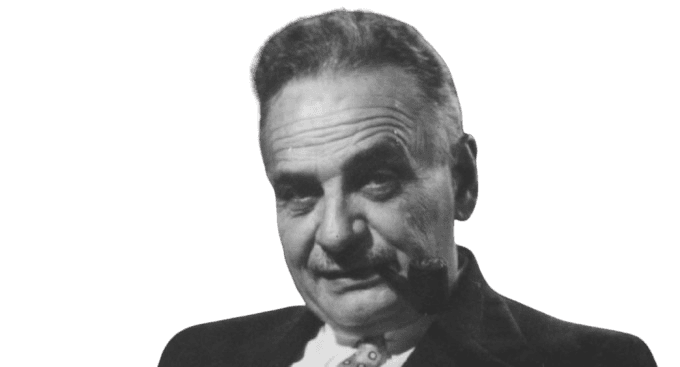Life and achievements
Early life
Carl Ortwin Sauer was born into an academic family in Warrenton, Missouri, on December 24, 1889. His father was William Albert Sauer, a professor at Central Wesleyan College, which the young Carl Sauer also attended. Sauer grew up understanding the importance of education and a German philosophical way of thinking. Carl's father had academic training in music and French and a great love for history and geography, which formed the basis of Carl's further education.
Sauer was nine when he was sent to Germany for rigorous early childhood education. This allowed him to learn European ideas and philosophies, especially the German classical, which focused on the relationship between history and nature. He returned to the United States in his teenage years to study at Central Wesleyan College, which he completed in 1908. Later on, Sauer went to Northwestern University for a short while and then moved to the University of Chicago, where he had much more passion for geography with the help of geologists like Rollin Salisbury. He received his Ph.D. in 1915 in geography with a specialization in the geography of the Ozark Highlands.
Legacy
Carl Sauer's contribution to the field of geography is enormous, especially in terms of cultural and historical geography. His rejection of environmental determinism, a popular theory in the early twentieth century, opened the way for a better understanding of man and the environment. Sauer stated that although the physical environment is the background, societies actively change it in agriculture, city building, and other uses. This perspective revolutionized geography and assisted in developing the sub-discipline known as human ecology.
Sauer then began to set up what is now called the Berkeley School of Geographical Thought at the University of California, Berkeley. This school focused on fieldwork, historical perspective, and anthropological, archeological, and historical methods in teaching geography. His paper, "The Morphology of Landscape," published in 1925, is perhaps his most well-known piece that significantly contributed to the field of cultural geography as it insisted on the active nature of the landscapes and their responsiveness to both the natural and the human impacts.
Thus, Sauer's contributions were in the academic field and other areas. He contributed towards understanding sustainability and conservation through his research on the land use, agriculture, and domestication of plants and animals in the Americas. Sauer's warnings of "destructive land use" and the "robber economy" of using natural resources seem relevant in the current climate change and environmental destruction discourse. Before the concept of sustainability of people's interaction with the land became famous, he was a man to speak about it.
Sauer's work has remained relevant in contemporary geography, environment, and anthropology. Through his works, he has encouraged generations of scholars to embrace interdisciplinary work and argue that history is integral to landscapes. Today, his work is the basis of many modern discourses on sustainability, conservation, and humanity's relationship to the world.
Milestone moments
Dec 24, 1889
Birth of Carl Ortwin Sauer
Carl Ortwin Sauer was born in Warrenton, Missouri, to a German family. His father taught at Central Wesleyan College, a small college that proved to be of great importance for the further formation of Sauer's personality.
Sauer received his early education in a German community, where he was trained in classical thoughts on how people relate to nature. It affected his subsequent academic works, primarily in geographical determinism.
In his childhood, Sauer was nurtured to learn and appreciate history, geography, and arts, forming the basis of his career in cultural geography.
Jul 16, 1915
A Ph.D. holder from the University of Chicago
Sauer received his doctoral education at the University of Chicago, where he earned a Ph.D. in geography. His dissertation topic was the geography of the Ozark Highlands, which made him curious about the physical environment and human beings.
While at the University of Chicago, Sauer was under the tutelage of some of the leading geologists and geographers, such as Rollin Salisbury. This period is the beginning of the transition from environmental determinism.
The years of studying at the University of Chicago gave Sauer the knowledge and ideas to apply later in changing conventional geographic theories.
Mar 12, 1923
Recruited at the University of California, Berkeley
In 1923, he joined the University of California at Berkeley and remained there for the rest of his working life. This appointment was the starting point for Sauer to build the Berkeley School of Geographical Thought Process.
Cultural geography was the area of concentration of Sauer's work at Berkeley, and he was mainly concerned with human-environment interaction. His stewardship of the University of Berkeley is credited with taking the geography department to new heights.
Here at Berkeley, Sauer started developing his ideas about cultural landscapes, which formed the basis of his later works, such as "The Morphology of Landscape."
Jul 17, 1925
The Morphology of Landscape is published
Sauer, therefore, in 1925, published his paper "The Morphology of Landscape," where he criticized the environmental determinism theory. This work postulated that landscapes are created by natural and human factors, which was quite radical in the given period.
The book "The Morphology of Landscape" was published in 1948 and is considered one of cultural geography's critical works. The idea that people continually transform the environment has been forwarded by Sauer and adopted by successive generations of geographers and environmental scientists.
This publication is considered a paradigm change in geographic thinking as it shifted from the deterministic approach to the dynamic approach to human and environment interaction.
